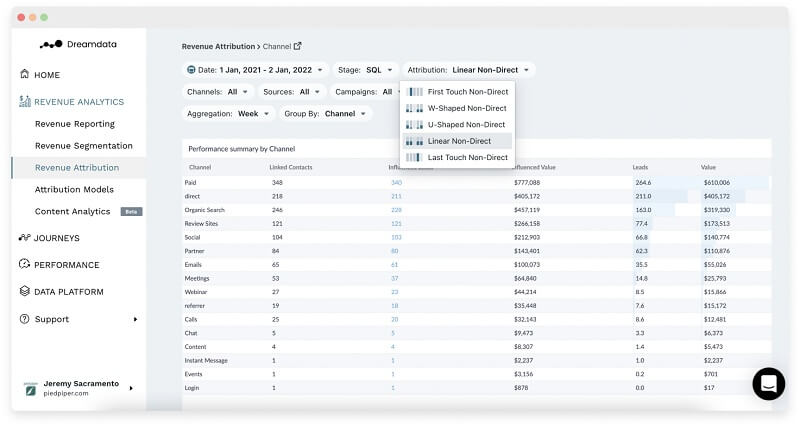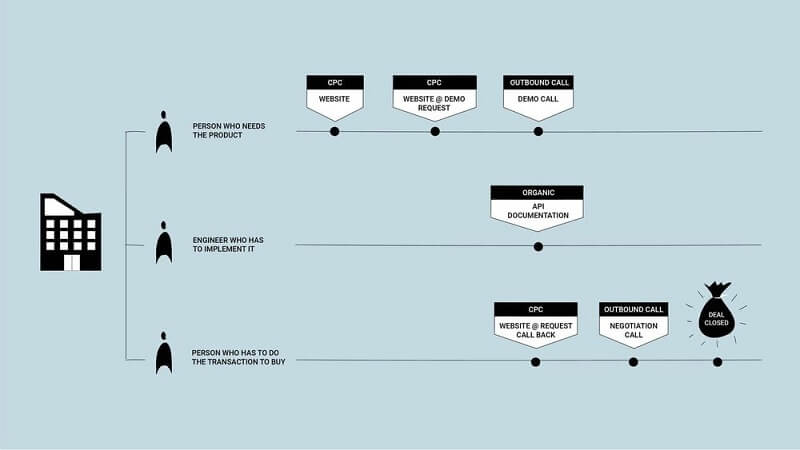5 Metrics To Measure B2B Business Growth Using Revenue Analytics
A study once discovered that it would take seven years or more of observation and data analysis to give companies an advantage over their adversaries. Those who choose to invest in intelligent data reporting are often compensated with augmented profit margins, a more workforce, and significant enhancement in productivity. While it is commonly accepted that a revenue analytics procedure is effective, it can also be time-consuming and moderately complicated.
Revenue analytics software sounds very beneficial for businesses and it is. The main issue, though, that people have with this type of software is not utilizing it to its full potential, which in turn does not give them the maximum benefits.
Accurate data is necessary for effective revenue analytics tools. Relevance and quality are key to powering these types of tools.
Before you begin a revenue analysis, read this post to discover which metrics you should be measuring.
What Performance Indicators Help Grow My Revenue
If you want to see a company’s TRUE growth potential, then measuring specific metrics and key performance indicators (KPIs) is essential. Even if you have access to revenue analytics software, it can be daunting to try and make sense of all the data. To simplify things, here are some KPIs that you should focus on as they directly relate to revenue growth:
1. The Cost of Gaining a New Customer (Customer Acquisition)
The amount of money you spend to get new customers significantly impacts your total revenue. To calculate this number, add up the annual cost of marketing, salaries, cost of software, contractors, and everything else. Then, divide it by the number of customers that your marketing efforts bring in. This is how much you’re spending on average to get each new client. By looking at this number regularly, you can tell how effective your marketing strategy is. Use different tactics to lower this value and increase overall profits.
2. Customer Lifetime Value (LCV)
The LCV (lifetime customer value) changes depending on the business and product type. For example, if a company sells an expensive product that is optional, then it is unlikely customers will make repeat purchases. This would lower the LCV. On the contrary, products that are affordable or need to be replenished regularly have a higher LCV because customers purchase them more frequently. Proprietors must keep the LCV high since earning revenue from existing customers costs less than acquiring new ones.
3. Average Profit Margin
The average profit margin is essential to calculate if you want to be successful in selling products or services. Why? Some might make you a large profit, while others, which are on the verge of breaking even, are your losses. To see where your products fall, subtract the production cost from the price per unit and group them according to similar margins. After that, decide how visible you want those items to be; high-margin items should get more attention than lower ones.
4. Digital Funnel Metrics
Without understanding the analytics of each stage in the sales funnel, it isn’t easy to ensure success. At every point in the funnel, you should keep track of how many visitors or customers you acquire or lose because those numbers are important, and they reflect your company’s progress. It can be tough making digital marketing work, but by regularly monitoring your results, you increase your chances for success.
The more website traffic you have, the greater your chances of generating leads. A lead is important because it’s near the end of the sales funnel; thus, only a few steps remain before they become paying customers. The number of sales demonstrates whether your marketing efforts were successful or if more work is required.
5. Conversion Rates
While it is essential to bring traffic to your site, it is even more important that this traffic consists of high-quality leads. Those are the individuals who will eventually convert into paying customers and generate revenue for your business. Keep conversion rates in mind when creating content so that you can cater specifically to your target audience. Always be sure to optimize those conversion rates by making adjustments to marketing strategies as needed – doing so will have a significant impact on your overall earnings.

Why are These Metrics Important?
The benefits of a revenue analysis are clear: it allows you to see which marketing and sales strategies are working so that you can fuel business growth. Additionally, a revenue analysis provides the following benefits:
1. Consistent Progress in Performance.
Put, data helps improve productivity by identifying issues and setting goals. With software that analyzes revenue analytics, you can not only pinpoint areas for improvement but also hold individuals and groups accountable for their performances. This creates a culture of both transparency and accountability in the workplace.
2. Create Achievable Goals.
With regular updates on your progress via these metrics, businesses can easily see if they are achieving their goals related to performance, revenue, and growth. Data accuracy is key in being able to monitor progress against set targets – if you’re lagging behind, it’ll be immediately apparent, and new tactics can be adopted as needed. The beauty of these metrics is that they provide up-to-date information so changes can be made at any stage to get things back on track quickly.
3. More Effective Human Resources Management.
Data from metrics can help you not only make better marketing decisions but also look for talented individuals who will be most likely to help the company achieve its goals. You can use digital funnel metrics, for example, to see which stages of the sales process need improvement. After that, you can check which team members have the skills necessary to make those changes and improve productivity. Having departmental boundaries creates a motivated team that any company would want on its side.
4. Close More Deals.
To optimize your sales process, take a look at your sales metrics. You’ll be able to see what stage of the customer lifecycle they are in and plan accordingly for the next steps. This way, you can keep them loyal to the company. By looking at the right numbers, it will be possible to improve your sales rate
5. Maximized Profit.
According to a study done by Bain & Company, organizations that have access to advanced data revenue analytics make up a large market share. The same study showed that if businesses use just 10% of the available data, their profits will increase. This is because detailed reporting allows companies to find issues quickly and create strategies to resolve them, thereby saving time and expenses.
Why Use Revenue Analytics Tools?
Using revenue analytics and b2b attribution software will save you time and energy in the long run. And, of course, tracking metrics is always important to see where your company stands and what changes (if any) need to be made. But, if sales are up, that’s good news but doesn’t reflect the whole story – use data to get a clearer picture.

While you can use a spreadsheet to organize your data, it will only be effective for smaller ventures. If you want to get serious about making money and scaling your operation, then you’ll need the help of software that is designed for those purposes.
Although it may be costly and time-consuming, the outcome will be worth your while. Just reflect on how much helpful information you will gain from revenue analytics. You can use this data to enhance various areas of your business by recognizing which features need more attention.
Also, these tools assist in lowering marketing expenses because you can improve your methods. If something isn’t bringing in satisfactory results, then there’s no reason to keep pouring money into it when you could invest that capital elsewhere—somewhere that promises a higher ROI.
Conclusion
By analyzing and tracking key data points, large B2B companies are able to improve their profits, performance, and staff morale. The benefits that advanced reporting can bring to your company are limitless.
After you take the time to do a comprehensive revenue analysis, it becomes much easier to plan and put into effect more lucrative methods that will help your team achieve its goals. Even though initially, it may seem like too large of an undertaking, in the end, it’s definitely worth it.
By using these metrics, your team will work more efficiently and effectively. They provide you with a comprehensive understanding of the areas where you can improve to make more money and grow revenue. Choosing top-notch revenue analytics software is what will help you earn the most profit from analyzing your revenue data.
Interesting Related Article: 6 Ways to Transform a Small Business to a Medium-Sized One.
Author’s Bio:
Jenn Pereira is a marketing consultant and growth hacker and currently serves as the co-founder of SaaSLaunchr.com – a full-service SaaS marketing agency.
She formulates personalized strategies for various clients to promote organic traffic growth and optimize their revenue pipeline by means of effective SaaS SEO and content marketing.

 My Account
My Account 

